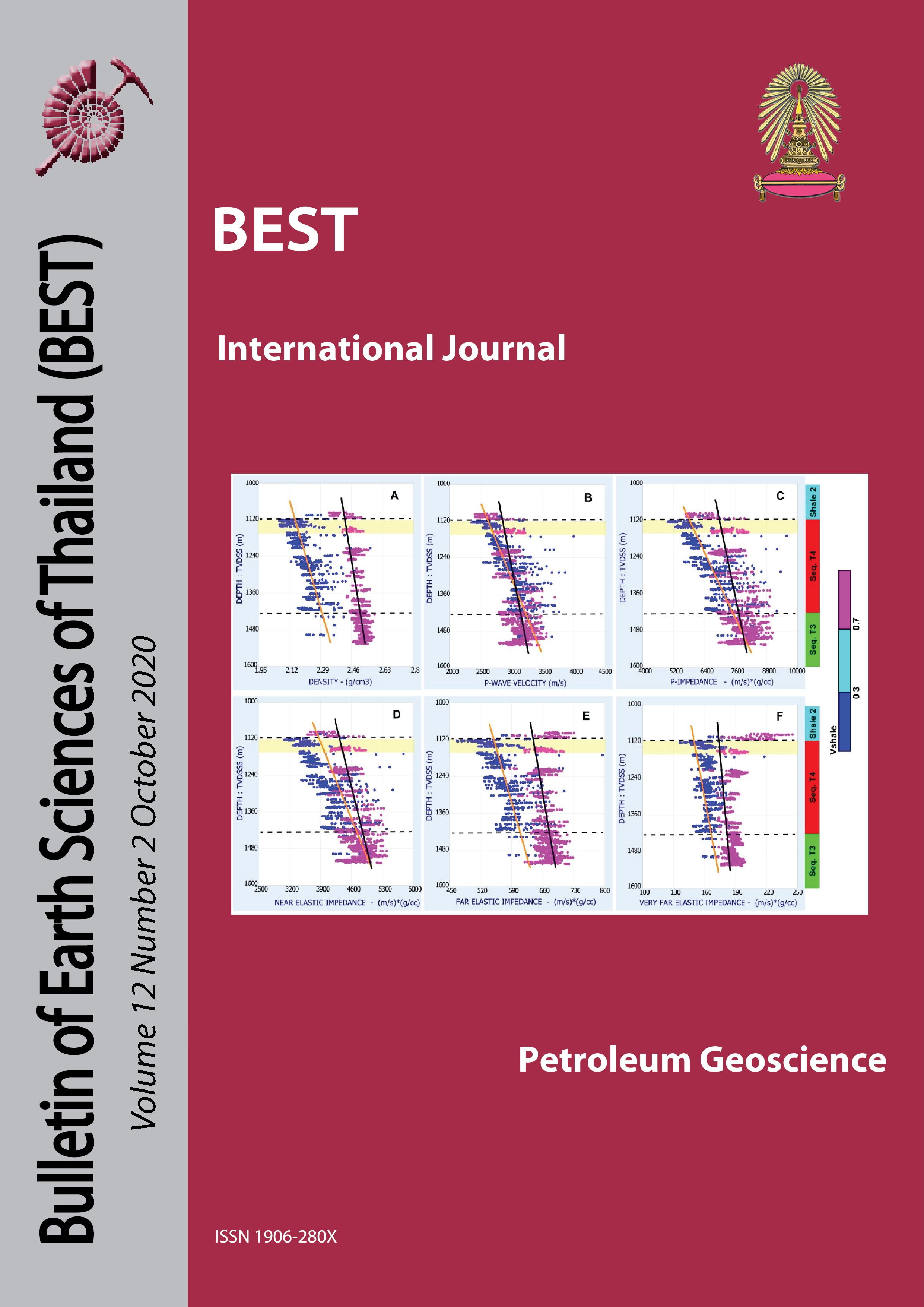MAPPING OF FAULT SYSTEM RELATED TO SALT MOVEMENT IN VOLVE FIELD, OFFSHORE NORWAY, NORTH SEA
Main Article Content
Abstract
3D seismic data and well data of the Volve field are integrated with seismic attributes to determine the tectonic evolution and fault system which were caused by salt movement during Triaasic and Jurassic periods. In the methodology, there are many attributes for seismic enhancement, fault imaging, fault enhancment and fault-patch extraction. Median filter is used for seismic enhancement. Variance and Chaos attributes are used to imaging faults and the fault image in Varinace attribute presented better images than Chaos attribute, thus the result of Variance attribute volume is processed in the next step. Edge Evidence and Ant-Tracking attributes are used to enhance fault image. The results present clear fault features of the Volve field. Automatic Fault Extraction (AFE) feature in the softwere does not work in this field. It may be due to a large number of fault-patches and high range of fault values in the Ant-Tracking attribute. The result of this study presents the fault image clearly in the Volve field. Moreover, the fault orientation of Triassic section are in NW-SE and NE-SW directions. The NE-SW direction is along the same direction with the major fault trend of the South Viking Graben. Although, there are a minor shift from the fault orientation in the Upper Permian section. It may be caused by salt movement. At last, the fault images in the Ant-Tracking attribute present low tectonic activity during Jurassic period due to lack of faults in the Jurassic section.
Article Details

This work is licensed under a Creative Commons Attribution-NonCommercial-NoDerivatives 4.0 International License.
Copyright © 2008 Department of Geology, Faculty of Science, Chulalongkorn University. Parts of an article can be photocopied or reproduced without prior written permission from the author(s), but due acknowledgments should be stated or cited accordingly.
References
Coward, M.P. 1995. Structural and tectonic setting of the Permo-Triassic basins of northwest Europe. In: Boldy, S.A.R. (ed.) Permian and Triassic Rifting in Northwest Europe. Geological Society, London, Special Publication, 91, 7–39.
Fisher, M.J. & Mudge, D.C. 1990. Triassic. In: Glennie, K.W. (ed.) Introduction to the Petroleum Geology of the North Sea. Blackwell, Oxford, 191–218.
Gabrielsen, R.H., Færseth, R.B., Steel, R.J., Idil, S. & Kløvjan, O.S. 1990. Architectural styles of basin fill in the northern Viking Graben. In: Blundell, D.J. & Gibbs, A.D. (eds) Tectonic Evolution of the North Sea Rifts. International Lithosphere Programme, 81, 158–179.
Hudec, M.R. & Jackson, M.P.A. 2007. Terra infirma: Understanding salt tectonics. Earth-Science Reviews, 82, 1–28.
Jackson, C. A. L., K. E. Kane, and E. Larsen, 2010, Structural evolution of minibasins on the Utsira High, northern North Sea; implications for Jurassic sediment dispersal and reservoir distribution: Petroleum Geoscience, v. 16, p. 105-120.
Pegrum, R.M. & Ljones, T.E. 1984. 15/9 Gamma gas field offshore Norway, new trap type for North Sea Basin with regional structural implications. American Association of Petroleum Geologists Bulletin, 68, 874–902.
Thomas, D.W. & Coward, M.P. 1996. Mesozoic regional tectonics and South Viking Graben formation: evidence for localized thin-skinned detachments during rift development and inversion. Marine and Petroleum Geology, 13, 149–177.
Ziegler, P.A. 1990. Tectonic and palaeogeographic development of the North Sea rift system. In: Blundell, D.J. & Gibbs, A.D. (eds) Tectonic Evolution of the North Sea Rifts. International Lithosphere Programme, 81, 1–36.


